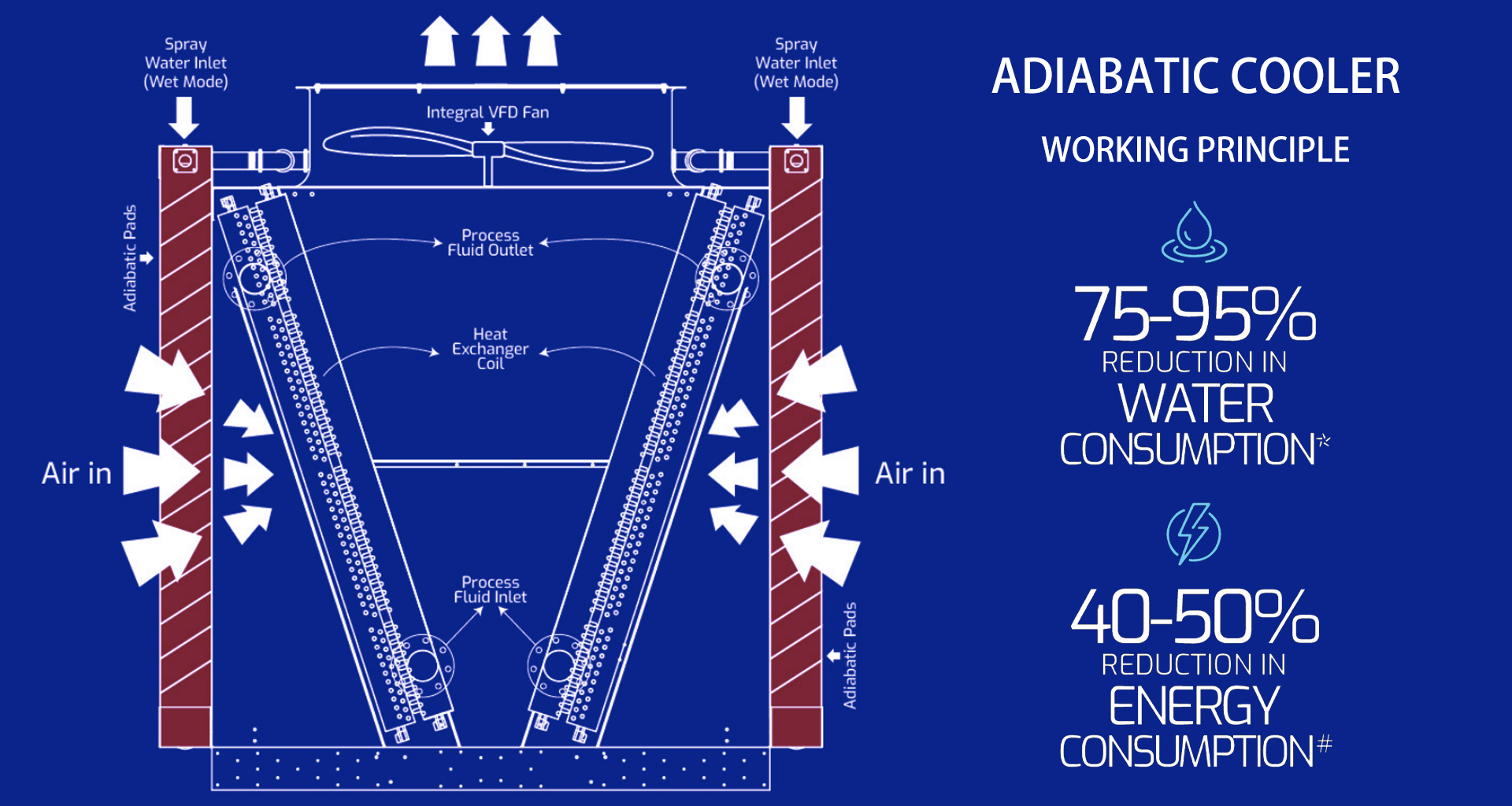News
Adiabatic Coolers: The Perfect Balance Between Cooling Efficiency and Water Conservation
Adiabatic coolers have emerged as a cutting-edge cooling solution that strikes the perfect balance between cooling efficiency and water conservation. As industries strive for sustainability, these innovative systems offer a game-changing approach to cooling, delivering optimal performance while significantly reducing water usage. Let's delve into the world of adiabatic coolers and discover how they are revolutionizing the cooling landscape.
Unlike traditional cooling towers that consume vast amounts of water through evaporation, adiabatic coolers employ a highly efficient process that utilizes the cooling effect of water evaporation without consuming it. These systems use a fine mist of water that evaporates upon contact with warm ambient air, which cools the process fluid in the heat exchanger. As a result, adiabatic coolers significantly reduce water consumption, making them an eco-friendly choice for businesses committed to sustainable practices.
Adiabatic coolers' ingenuity lies in their ability to adapt to varying environmental conditions. During hot weather, when cooling demand is at its peak, adiabatic coolers automatically transition into adiabatic mode, where water is used to enhance the cooling effect. However, in cooler conditions, the systems effortlessly switch to dry mode, relying solely on air to cool the process fluid. This flexibility ensures optimal performance while conserving water resources, making adiabatic coolers an environmentally responsible solution.
In industries with high cooling demands, such as data centers, manufacturing, and power generation, adiabatic coolers excel at maintaining precise and stable temperatures. Their intelligent control systems allow for fine-tuning of cooling parameters, ensuring the most efficient use of water and energy. By minimizing unnecessary water consumption, businesses can reduce operational costs while upholding their commitment to sustainability.
Adiabatic coolers' water-saving capabilities extend beyond reduced consumption. By incorporating water management systems, these coolers ensure minimal water wastage, optimizing the overall water usage process. Additionally, adiabatic coolers require lower maintenance compared to conventional cooling systems, resulting in further resource savings and reduced environmental impact.
In data centers, where cooling demands continue to rise with increasing computational power, adiabatic coolers offer a scalable and energy-efficient solution. By utilizing the power of water evaporation and dry cooling in tandem, these systems achieve exceptional cooling performance, enabling data centers to operate at peak efficiency while reducing their ecological footprint.
Moreover, the implementation of adiabatic coolers can lead to significant cost savings in the long run. Reduced water consumption and energy efficiency translate into lower utility bills, fostering financial sustainability for businesses while supporting their corporate responsibility initiatives.
As we navigate the challenges of climate change and water scarcity, adopting adiabatic coolers represents a proactive step towards environmental stewardship. By embracing this cooling technology, industries can showcase their commitment to water conservation, reduced carbon emissions, and sustainable operations.
In conclusion, adiabatic coolers present the ideal equilibrium between cooling efficiency and water conservation. By harnessing the cooling power of water evaporation and seamlessly transitioning between wet and dry modes, these innovative systems offer unparalleled performance while minimizing water usage. As businesses increasingly embrace sustainability, adiabatic coolers stand as a beacon of progress in the journey towards a greener, more efficient future.


